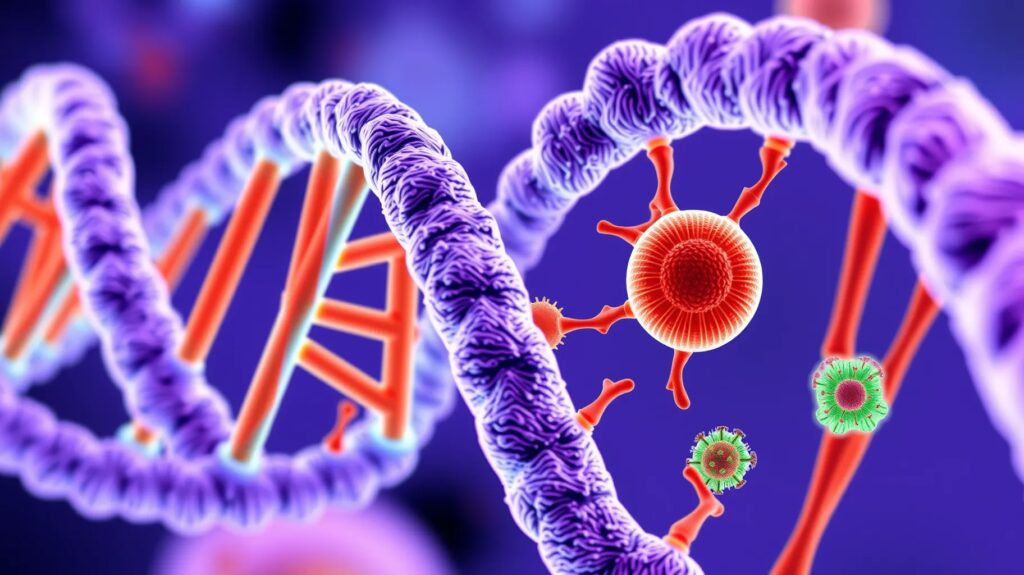
In the realm of technological advances, 3D bioprinting stands out as a beacon of hope and innovation. This groundbreaking technology reshapes the landscape of medical science and tissue engineering, promising to revolutionize healthcare as we know it.
What is 3D Bioprinting?
3D bioprinting involves printing biological materials such as cells, growth factors, and biomaterials layer by layer to create bioengineered tissues. Unlike traditional 3D printing that uses plastics or metals, bioprinting utilizes bio-inks—substances that mimic the environment of living tissues.
How Does It Work?
The process starts with a digital model of the tissue or organ. Bio-inks load into a printer, which deposits them layer by layer according to the model. This intricate process can create complex structures, such as blood vessels, skin, and even whole organs.
The Current Impact
3D bioprinting has already led to significant advances in regenerative medicine, where damaged tissues can be repaired or replaced. For instance, bioprinted skin grafts treat severe burns, and bioprinted bone structures assist in orthopedic surgeries.
Enhancing 3D Bioprinting Capabilities
Despite these advancements, 3D bioprinting remains in its infancy. Researchers continually look for ways to augment this technology. Enhancements in bio-inks, printing precision, and cell viability are crucial for the next generation of bioprinted tissues.
Innovative Bio-Inks
Scientists focus on developing new bio-inks. They experiment with nanomaterials and biopolymers to create inks that more closely mimic natural tissues. These inks support better cell growth and differentiation, leading to more functional tissues.
- Nanomaterial Integration: Researchers integrate nanoparticles into bio-inks, creating materials with enhanced structural integrity and bioactivity. These nanoparticles also promote specific cell behaviors, such as differentiation into desired cell types.
- Smart Bio-Inks: Innovations in smart materials pave the way for bio-inks that respond to environmental stimuli, like pH or temperature changes. These inks release growth factors or other bioactive molecules in a controlled manner, enhancing tissue development and repair.

Precision Printing
Printing precision is another critical aspect. Current printers achieve remarkable detail, but the goal is even higher accuracy. Advances in microprinting techniques and machine learning pave the way for this.
- Micro-Resolution: Micro-resolution printing techniques allow the creation of extremely fine structures, which are crucial for replicating the intricate architecture of natural tissues. This precision is essential for fabricating functional blood vessels and neural networks.
- AI and Machine Learning: By incorporating artificial intelligence and machine learning algorithms, bioprinters optimize printing parameters in real-time, ensuring consistent quality and improving the overall efficiency of the bioprinting process.
Improving Cell Viability
Cell viability remains a significant challenge. Ensuring that a high percentage of cells survive the printing process and function correctly in the printed tissue is essential. Researchers develop new methods to optimize cell conditions during and after printing.
- Hydrogel Scaffolds: Utilizing hydrogel scaffolds that mimic the extracellular matrix provides a supportive environment for cells during and after printing. These scaffolds enhance cell adhesion, proliferation, and differentiation, leading to more viable and functional tissues.
- Nutrient Delivery Systems: Innovative nutrient delivery systems within the printed tissues ensure that cells receive the necessary nutrients and oxygen to survive and thrive. These systems integrate into the bioprinting process, promoting better cell health and tissue maturation.
Real-World Applications
The real-world applications of augmented 3D bioprinting are vast. In the future, we could see personalized medicine where organs and tissues are printed on demand, tailored to the patient’s own cells. This could eliminate the risk of organ rejection and reduce the reliance on organ donors.
Personalized Medicine
- Tailored Treatments: Using a patient’s own cells to create bioprinted tissues and organs significantly reduces the risk of immune rejection. This personalized approach leads to more effective and long-lasting treatments for various conditions.
- On-Demand Printing: Printing tissues and organs on demand can drastically reduce transplant wait times. Patients in need of critical care could receive bioprinted organs much faster than traditional donor organs, potentially saving countless lives.
Drug Testing and Development
3D bioprinted tissues become invaluable tools in pharmaceutical research. They offer more accurate models for testing the effects of drugs on human tissues, leading to safer and more effective treatments.
- In Vitro Models: Bioprinted tissues serve as advanced in vitro models for studying disease mechanisms and drug responses. These models provide more relevant data compared to traditional cell cultures or animal models.
- Personalized Drug Testing: Personalized bioprinted tissues test how individual patients respond to different treatments, allowing for the development of personalized drug regimens tailored to their unique biological makeup.
Ethical Considerations
3D bioprinting raises ethical questions. Issues such as accessibility, regulation, and the potential for biohacking need addressing. It’s crucial that the development of this technology is guided by ethical principles to ensure it benefits society as a whole.
Accessibility and Equity
- Global Access: Ensuring that 3D bioprinting technology is accessible worldwide is a significant ethical consideration. Efforts must be made to make this technology affordable and available, particularly in low-resource settings.
- Healthcare Disparities: Addressing existing healthcare disparities is essential. The benefits of bioprinting should not be limited to wealthy or developed nations but should be distributed equitably to improve global health outcomes.
Regulation and Safety
- Regulatory Frameworks: Developing comprehensive regulatory frameworks is critical to ensure the safety and efficacy of bioprinted tissues and organs. These frameworks must keep pace with technological advancements and provide clear guidelines for clinical use.
- Ethical Research Practices: Upholding ethical standards in research and development is crucial. This includes obtaining informed consent from donors of biological materials and ensuring that experimental treatments are conducted responsibly.
The Road Ahead
The journey of 3D bioprinting is just beginning. With continued research and development, this technology holds the potential to transform healthcare. By augmenting bioprinting techniques, we move closer to a future where tissue and organ shortages become a thing of the past.
Future Innovations
- Hybrid Printing: Combining 3D bioprinting with other advanced technologies, such as CRISPR gene editing and nanotechnology, leads to new possibilities in tissue engineering. These hybrid approaches enhance the functionality and integration of bioprinted tissues.
- Regenerative Medicine: The future of regenerative medicine looks promising with 3D bioprinting. Researchers explore the potential of printing entire organs, such as hearts and kidneys, which could one day be used in transplants, reducing the dependency on donor organs.
Conclusion
The augmentation of 3D bioprinting represents a thrilling frontier in biomedical engineering. As we enhance this technology, the possibilities for medical advancements become almost limitless. The key to success lies in the ongoing innovation and collaboration among scientists, engineers, and medical professionals.
For more in-depth information on this fascinating topic, you can explore additional resources here.
By embracing these developments, we are not just augmenting 3D bioprinting; we are redefining the future of healthcare.
Resources for Augmenting 3D Bioprinting
Articles and Research Papers
- Nature Biotechnology – 3D Bioprinting of Complex Tissues: An in-depth review of recent advancements in 3D bioprinting technology.
- ScienceDirect – Augmented 3D Bioprinting with AI: Discusses how AI integration enhances bioprinting processes.
- PubMed – Applications of 3D Bioprinting in Regenerative Medicine: A comprehensive overview of bioprinting applications in medicine.
Books
- 3D Bioprinting for Reconstructive Surgery: A detailed look at the use of bioprinting in surgical applications.
- Bioprinting: Principles and Applications: Covers fundamental principles and diverse applications of bioprinting technology.
Online Courses and Tutorials
- Coursera – Introduction to 3D Bioprinting: A beginner-friendly course on the basics of 3D bioprinting.
- edX – Bioprinting: 3D Printing Body Parts: A comprehensive course on the principles and applications of bioprinting.
Industry Reports
- Grand View Research – 3D Bioprinting Market Analysis: An analysis of the current state and future projections of the 3D bioprinting market.
- Market Research Future – 3D Bioprinting Market Trends: A report on the latest trends and future outlook of the bioprinting industry.
Websites and Blogs
- 3DPrint.com – Bioprinting Section: Regular updates and news articles on bioprinting advancements.
- Tissue Engineering and Regenerative Medicine International Society (TERMIS): A hub for the latest research and developments in tissue engineering and bioprinting.
Videos and Webinars
- YouTube – TED Talk: The Future of 3D Bioprinting: A TED Talk exploring the potential and challenges of 3D bioprinting.
- Webinar: Advances in 3D Bioprinting Technology: An informative webinar on the latest innovations in bioprinting.
Forums and Communities
- ResearchGate – 3D Bioprinting Group: A community of researchers discussing the latest findings and challenges in 3D bioprinting.
- Reddit – 3D Bioprinting: A subreddit dedicated to sharing news, research, and discussions about bioprinting technology.





